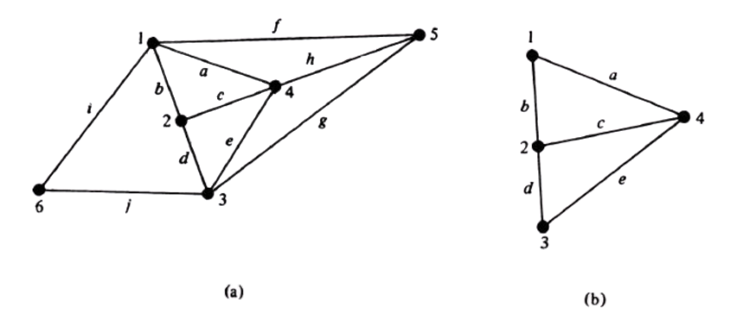Sub Graphs
Sub-Graph
A graph g is said to be a subgraph of a graph G if all the
vertices and all the edges of g are in G, and each edge of g has the same end
vertices in g as in G.
A subgraph can be thought of as being contained in (or a
part of) another graph. The symbol from set theory, g ⊂ G, is used
in stating “g is a subgraph of G.”
The following observations can be made immediately:
1. Every graph is its own
subgraph.
2. A subgraph of a subgraph of G
is a subgraph of G.
3. A single vertex in a graph G
is a subgraph of G.
4. A single edge in G, together
with its end vertices, is also a subgraph of G
Edge-Disjoint Subgraphs:
·
Two (or more) subgraphs g1 and g2 of a graph G
are said to be edge disjoint if g1 and g2 do not have any edges in common.
Vertex-Disjoint Subgraphs:
·
Sub graphs that doesn’t even have vertex in
common are said to be vertex disjoint.

